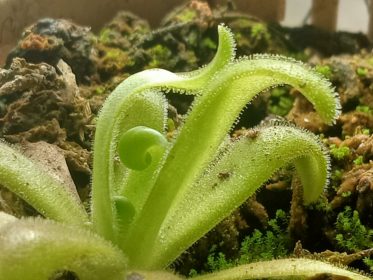First, some eye candy.
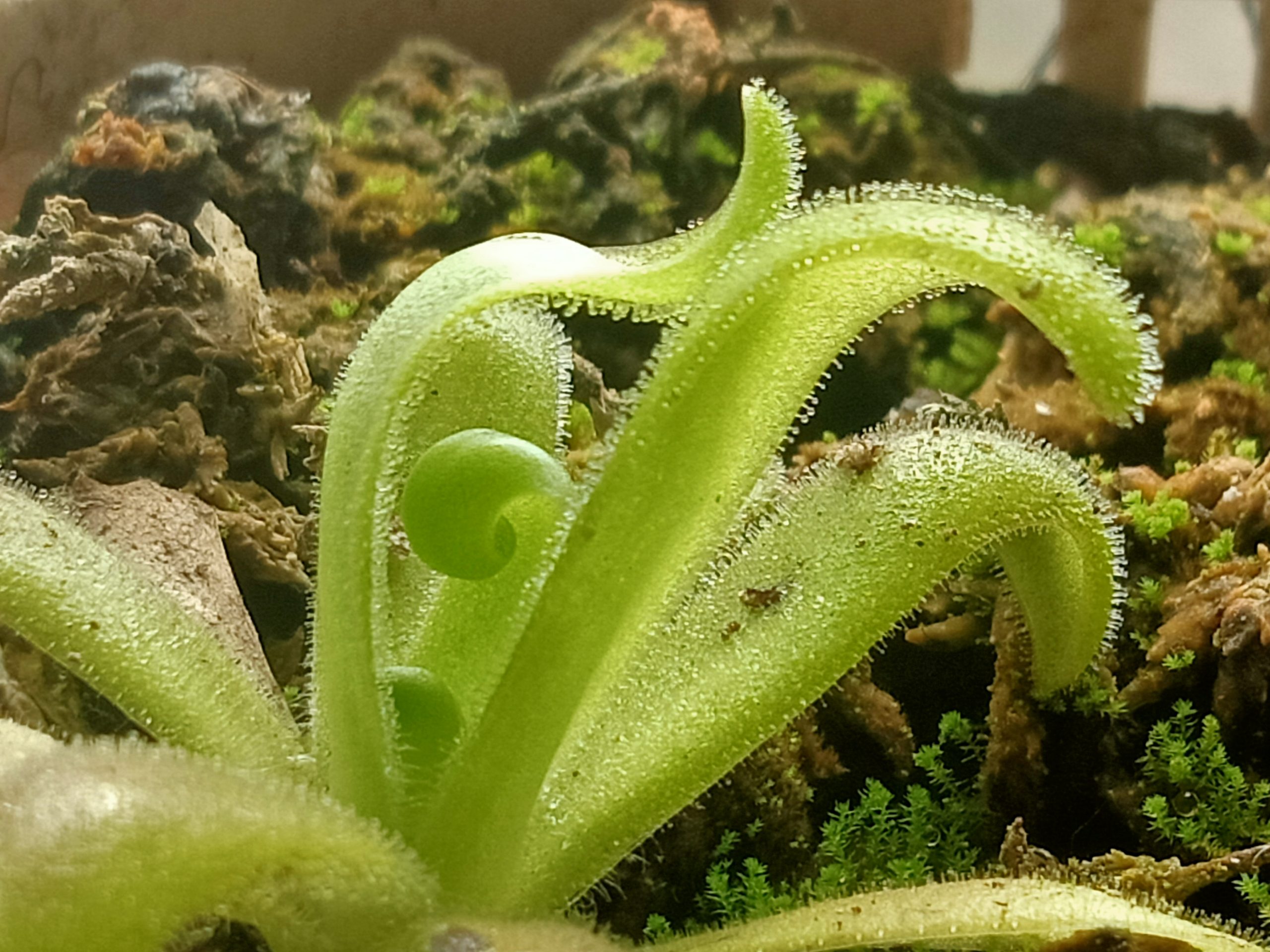
Now for how to get here.
You begin with a healthy pinguicula plant (healthier than this – this is a plant after I pulled off the leaves, because I forgot to take photos before). It should have a good number of leaves, enough to not miss a couple. Do not pull a leaf out of a plant that doesn’t have many out of greed to have more plants faster – you may lose the one you have.
Ignore the lack of dew on the mother plant. It is healthy. Just dormant.
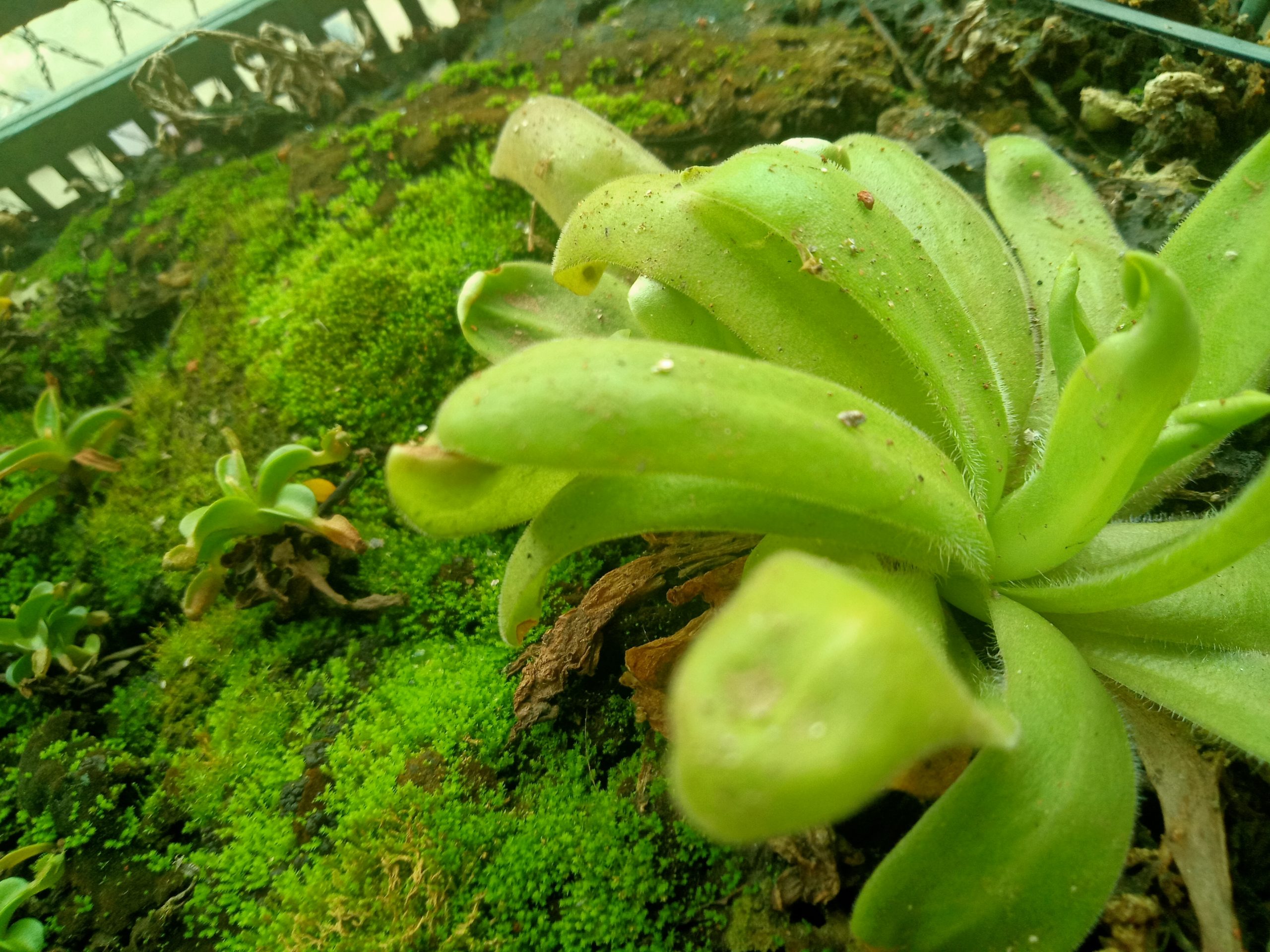
Pull the leaves off from the base carefully. Pinguicula leaves can be fragile – if you pull a long leaf from the tip with some force, the leaf is likely to tear – you don’t want that. Hold gently and as close as possible to the base and gently pull it off. Gentle downward force at the base or sideways pulling works and it will just snap off. If you are struggling to pull it off without adding force, think of it as snapping it out from the base – it is a technique and doesn’t take much force. Force is fine as long as you don’t tear the leaf.
Place the leaves somewhere suitable. I have placed them on a tray in which there used to be nepenthes truncata seedlings that died this summer. I couldn’t bear to throw the tray away, so there was a lot of empty space on it. You can literally put the plantlets anywhere – an empty pot, on tissue paper in a plastic box or cup, or even in a zip lock bag. It isn’t very important. Pinguiculas aren’t very obsessed with media or for that matter roots.
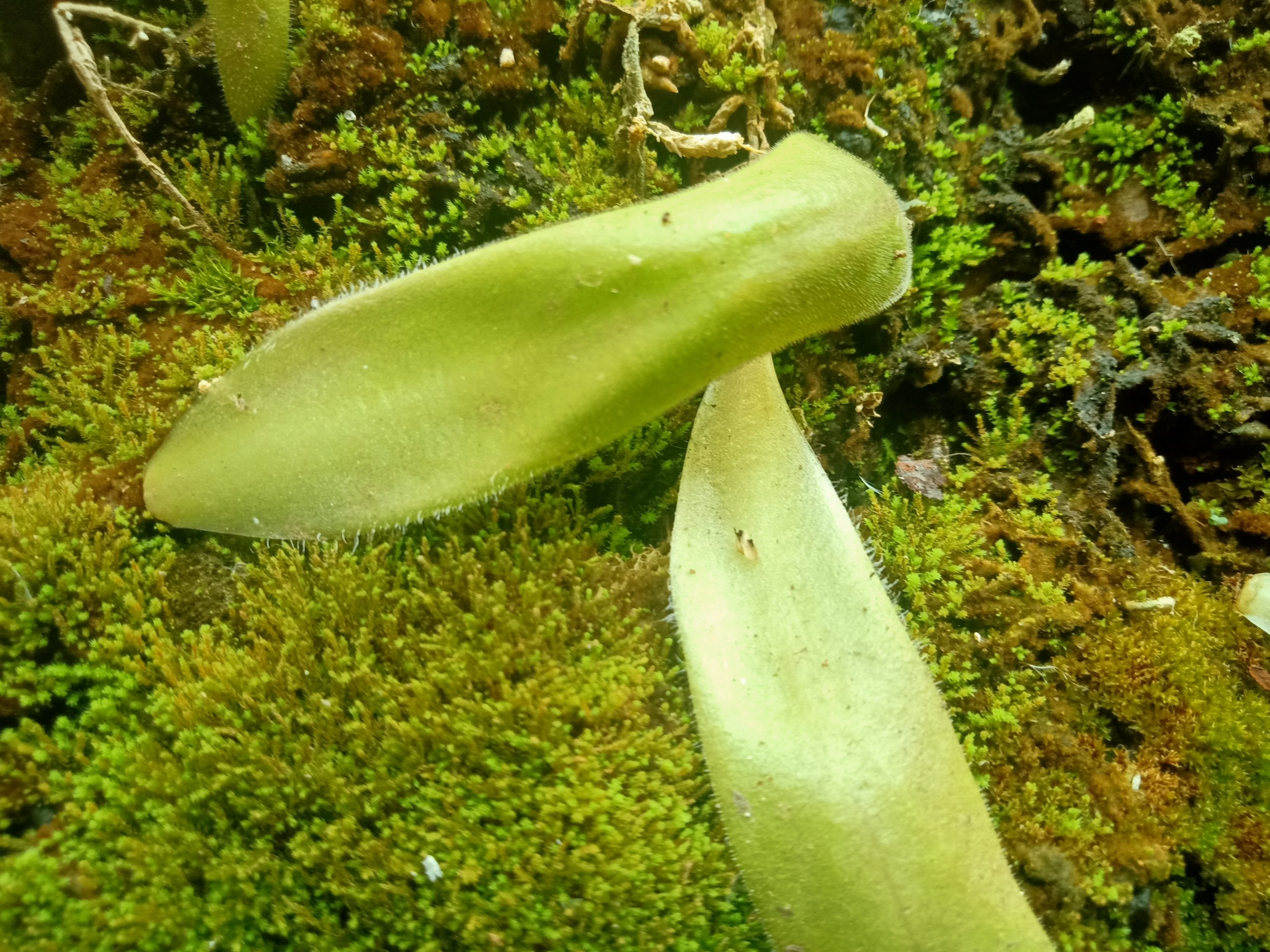
If it is somewhere with some humidity, that is all you need to do. Or cover them or something. These guys have moss around them, they are fine.
Put your leaf pullings somewhere where they get bright light, but not scorching hot direct sunlight for hours on end – you want to grow plants from those leaves, not dry them.
Ignore them for a week or so. Nothing much will happen. At some point around a week (longer for some plants) you will see tiny bumps on the base of the leaf (remember your teenage years “OMG is this going to be a pimple?”) – they will barely be perceptible at the start – more like slight bumps.
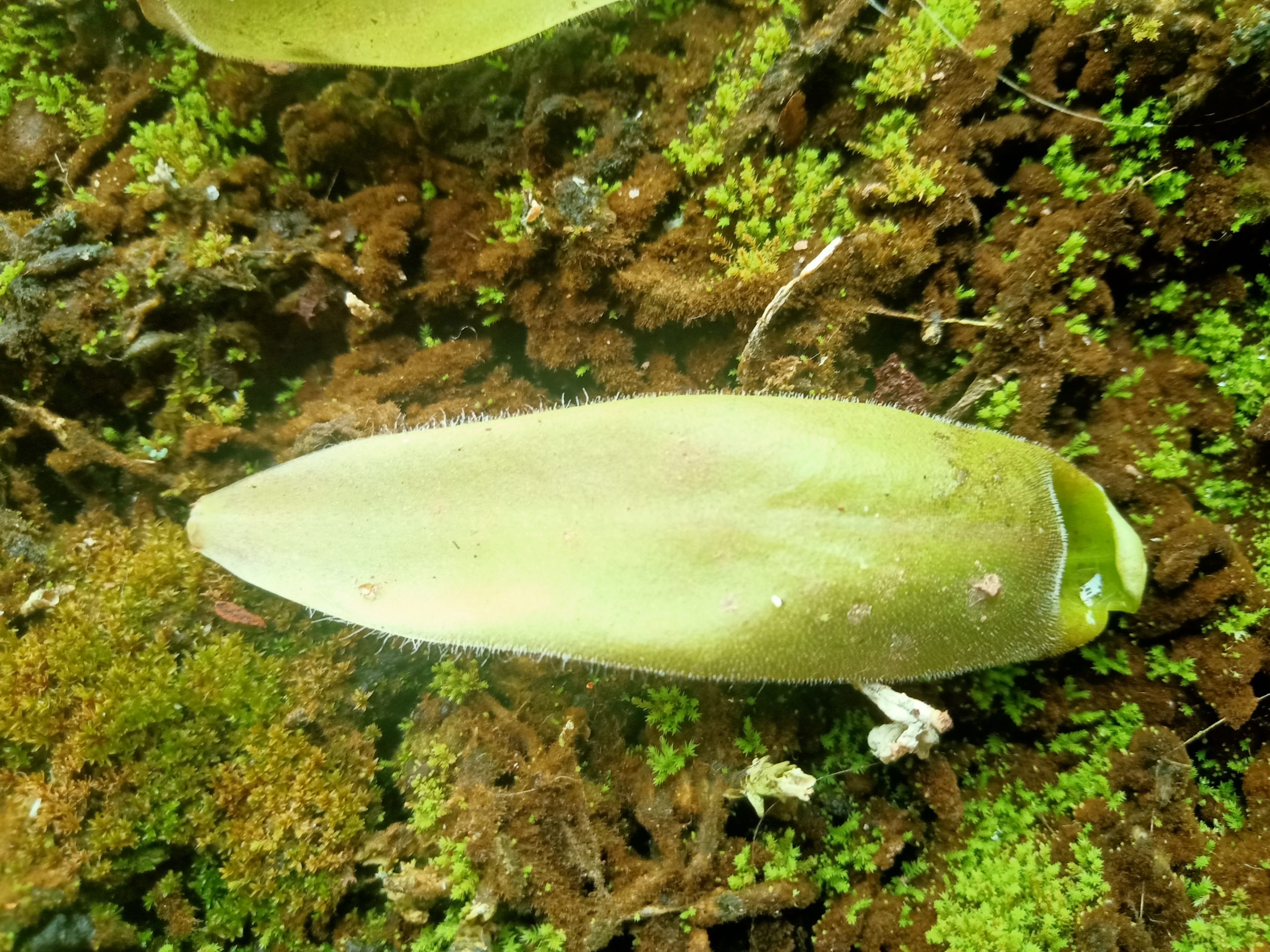
Then they will be definite bumps.

Then those darling pimples will grow and burst into the most welcome result of ripe pimples ever.

While you are obsessing over the growth of those bumps into plantlets, the original leaf will start drying out slowly from the tip. Not much you can do about it, but generally, you want the leaf to last long enough for the plantlets to be big enough to survive independently by the time it is gone – that makes successful pullings. So don’t scrimp on the humidity.

Initially the leaves will be a bit confused, like they are not sure what they want to be when they grow up. Wavy, conjoined, whatever. Soon enough, the new leaves that form will be typical of the plant you pulled the mother leaf from. Just miniature.
When the leaf dies out, you can look at the plantlets you have. Sometimes you have just one plantlet. Nothing further needs to be done. Sometimes you have a cluster of them. If the original leaf is dead, you can c-a-r-e-f-u-l-l-y separate them out. CAREFULLY. They will be fragile. Separating them gives them some space to grow. You can also leave them like that to separate later. Not a big deal.
Careful of the roots, and just make a hollow and place the plant inside. Do not get overenthusiastic and try to “plant” it. Ping roots are more like the tendrils on cucumber vines than like roots proper. Handle them too much and you do more damage than good. The plant will figure its life out. As long as it isn’t in danger of toppling out of the pot, the roots will figure themselves out. If it is in danger of toppling off, place in better position and still don’t harass the fragile roots.
You may want to read this for more idea on replanting plantlets. Successfully acclimatizing pinguicula that arrive via shipping
Now you have such plantlets
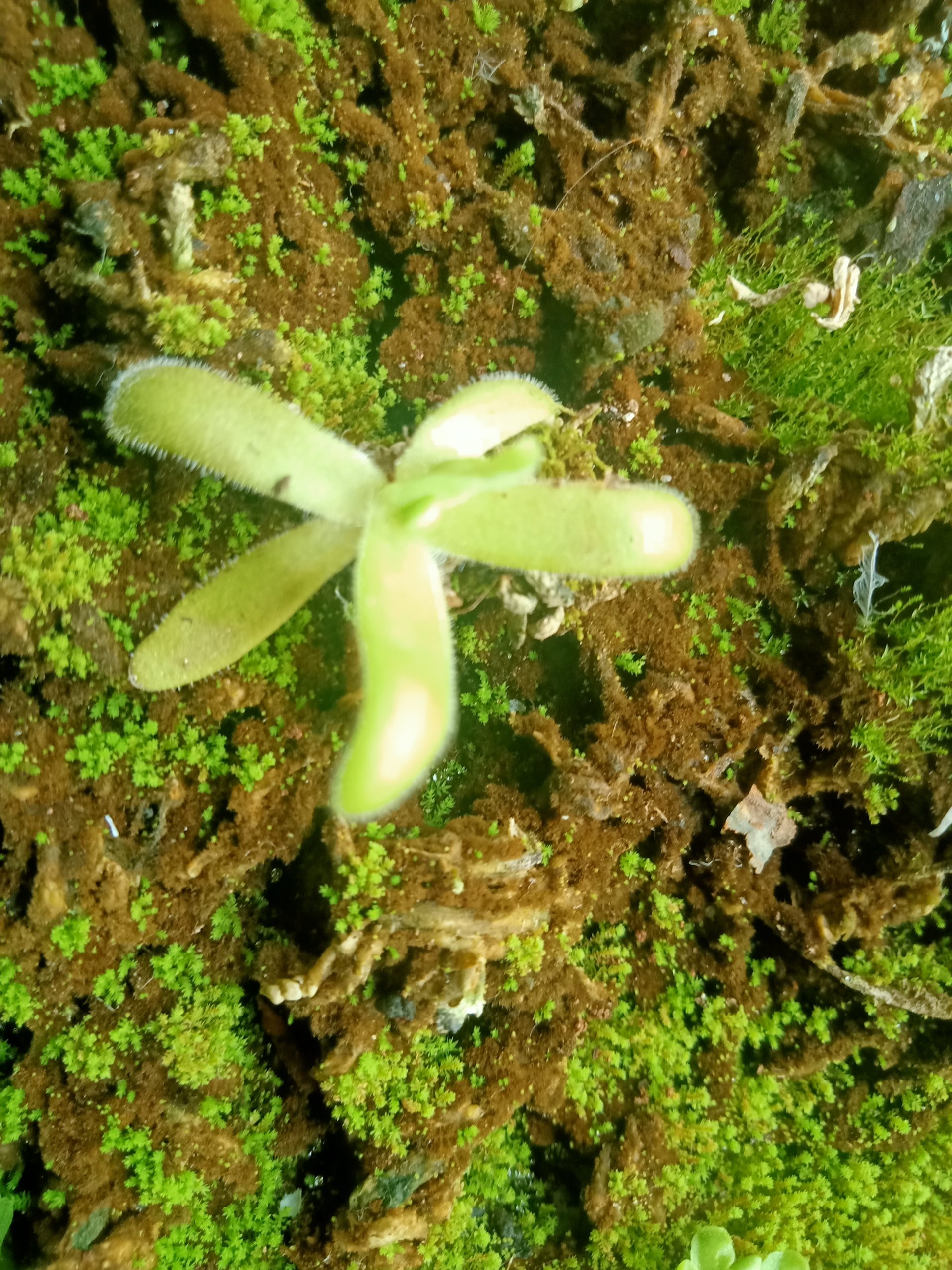
They grow
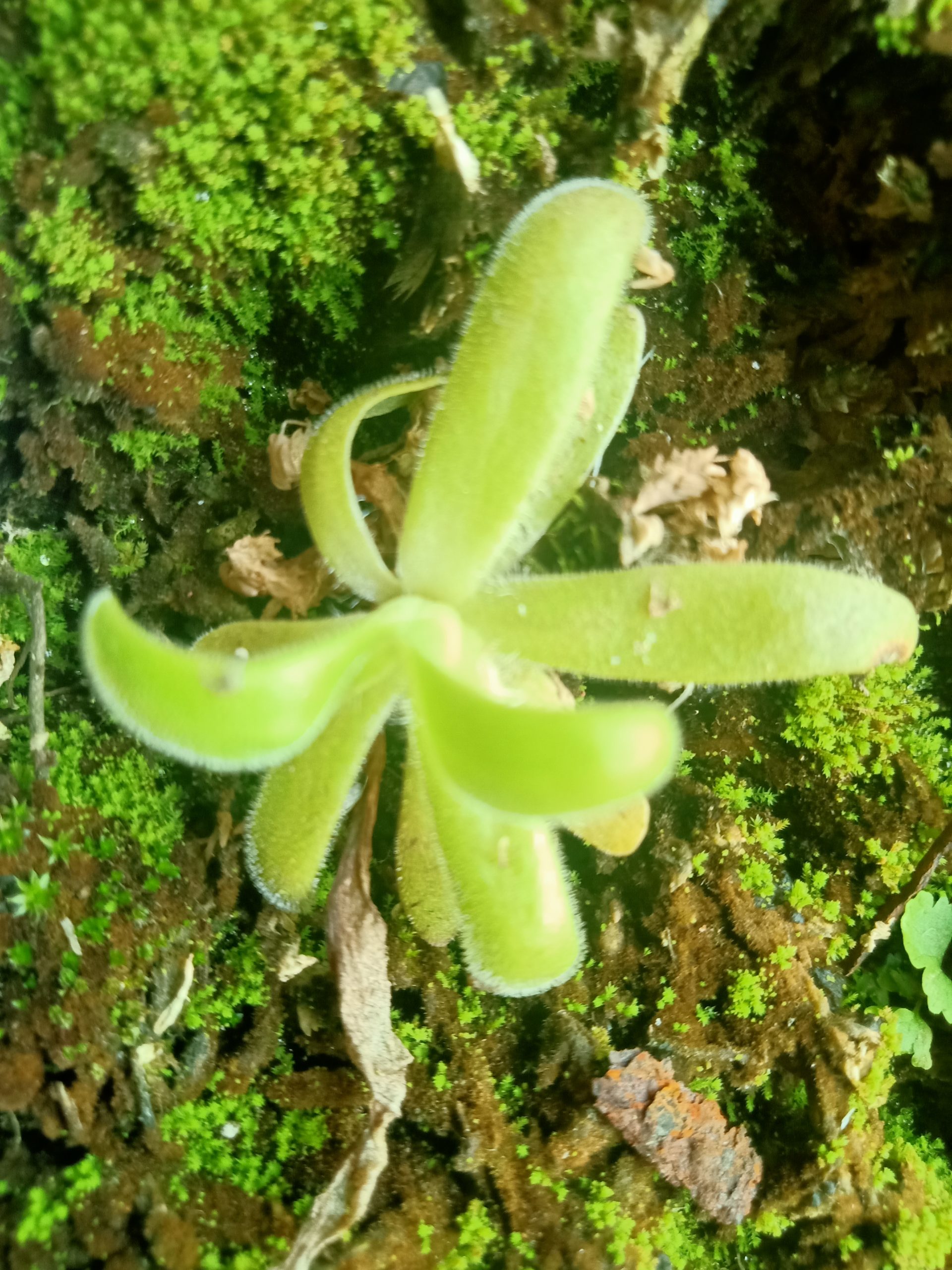
And grow
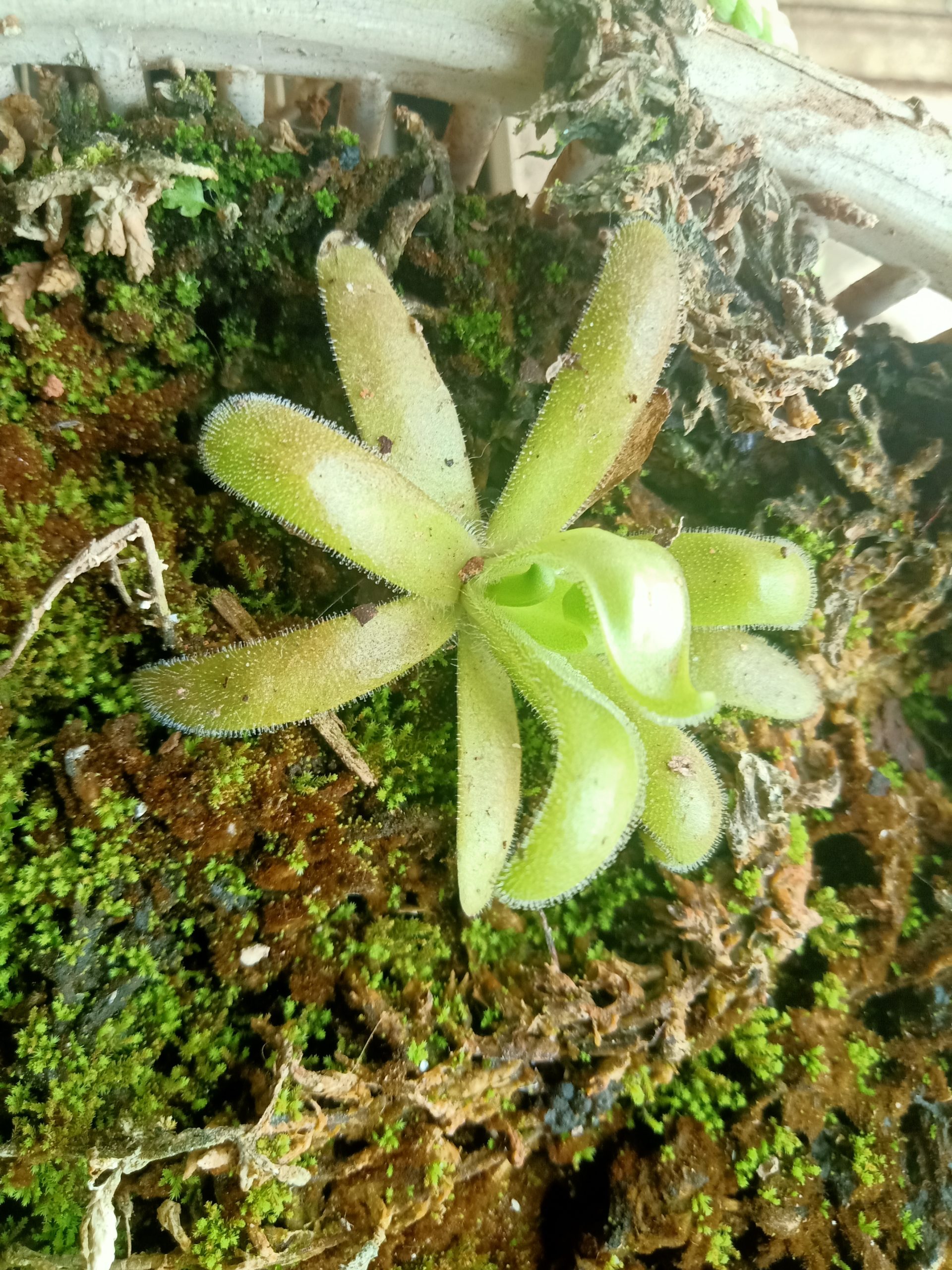
And etc
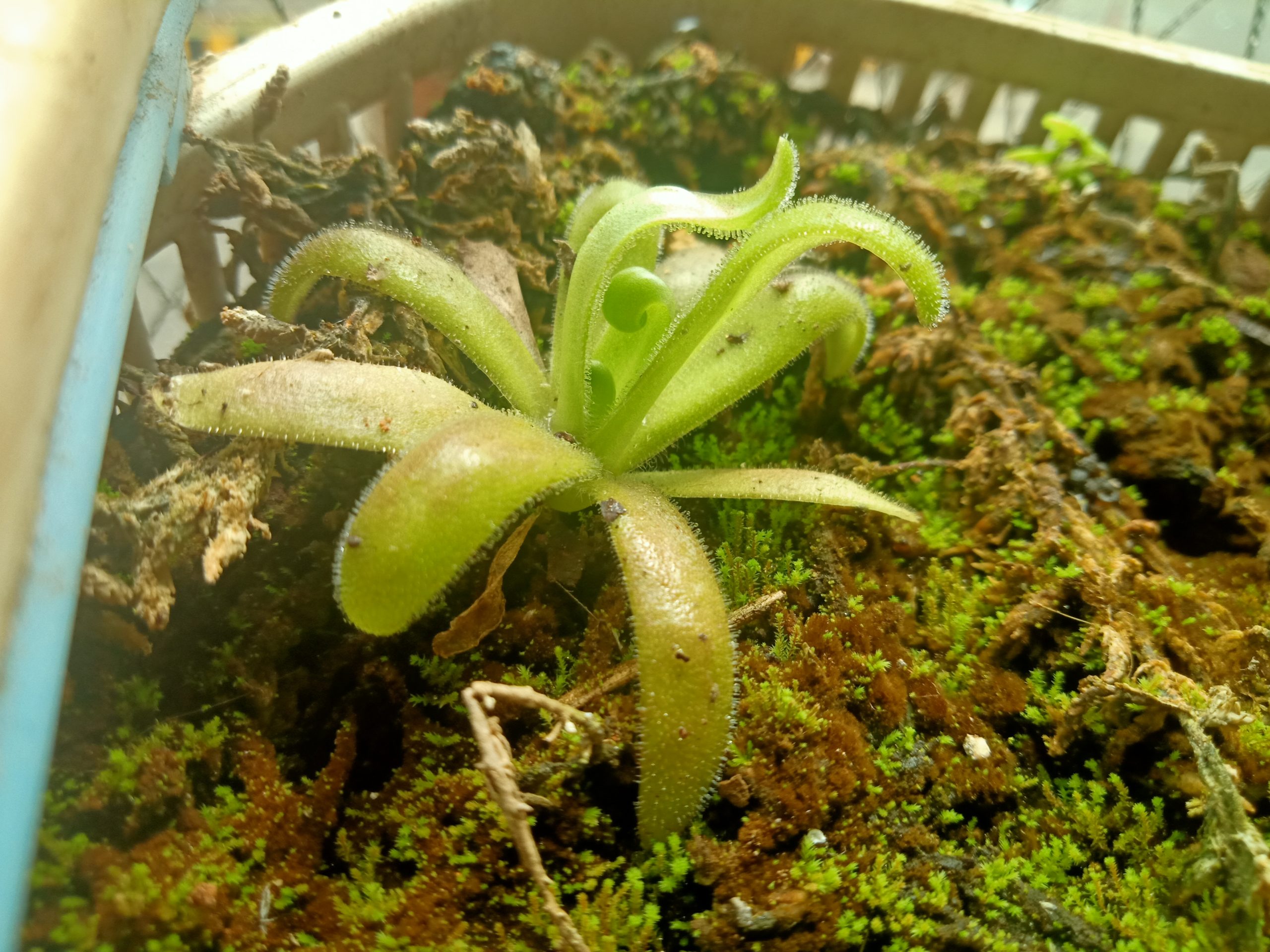
That is it.
Happy growing.
